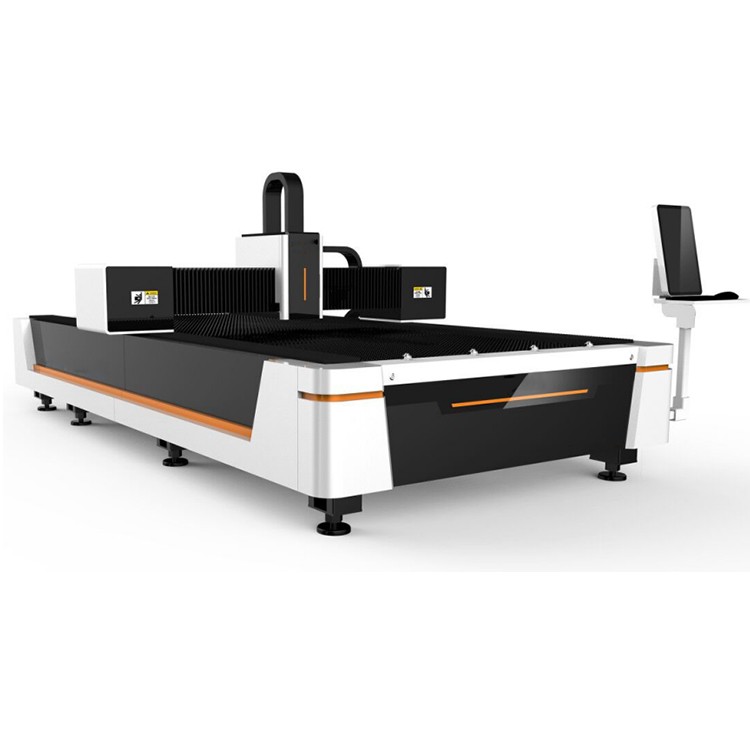

We are a professional laser cutting machine manufacturer with over 10 years of industry experience. Today, we would like to introduce you to the laser cutting machine for laser cutting material compatibility in full:

The core advantage of laser cutting technology lies in its ability to process a wide range of materials, but there are significant differences in the response characteristics of different materials to laser light. Understanding the processability of each type of material and its process characteristics is the basic condition for ensuring cutting quality.
1, The processing characteristics of metal materials
Carbon steel series materials are most suitable for laser cutting. Low-carbon steels can be cut efficiently with oxygen assistance, resulting in a flat, smooth cut. Medium and high carbon steel need to control the heat input to avoid hardening, usually using nitrogen protection. The cutting of stainless steel requires special attention to the influence of chromium, 304 and other austenitic stainless steel is prone to slag, need to optimize the air pressure parameters; 430 ferritic stainless steel should pay attention to thermal deformation control.
Non-ferrous metals are even more challenging to process. The highly reflective nature of aluminum and aluminum alloys requires anti-reflective devices and high purity nitrogen gas protection when cutting. Copper processing is limited to thin sheets and must be cut in pulsed mode with tightly controlled power density. Titanium alloys are cut under inert gas to avoid high temperature oxidation that can affect material properties.
2, Applicability analysis of non-metallic materials
Among organic materials, acrylic is the best performer, and the CO2 laser can achieve polished cutting surfaces up to 50mm thick.The cutting quality of wood varies according to the type, with MDF boards of uniform density providing the best results, and natural wood needing to take into account the effect of grain direction. Leather-based materials need to be cut with controlled thermal action to avoid carbonization and discoloration of the edges.
Inorganic non-metallic materials require special processes. Glass cutting relies on laser-induced thermal stress to control crack expansion, but the edges are rougher. Stone materials can be engraved superficially, but the depth of the cut is inefficient. Ceramic materials are brittle and only suitable for thin sheet processing.
3, Processing points of composite materials
Metal matrix composites need to balance the parameters. Aluminum-based silicon carbide and other materials need to take into account the processing characteristics of metals and ceramics, usually using a high peak power pulse mode. Plastic metal laminate cutting, need to select the dominant parameters according to the main functional layer.
Non-metallic composites are relatively complex to process. Carbon fiber reinforced plastics generate harmful fumes when cutting and must be equipped with a powerful smoke extraction system. Fiberglass materials are prone to edge delamination and require optimized cutting paths and speeds.
4, Limitations of special materials
Highly reflective materials present processing risks. Laser cutting of precious metals such as gold and silver requires specialized equipment, and conventional processing is prone to damage optical components. High thermal conductivity materials such as pure copper, heat dissipation too quickly resulting in low energy utilization.
Toxic materials require strict control. Cutting of fluorine-containing plastics will release harmful gases, and must be equipped with professional exhaust gas treatment devices. Carcinogenic materials such as asbestos are prohibited from laser processing.
Flammable materials require special attention. Certain chemical materials and powder products need to be processed under inert gas protection and emergency fire extinguishing equipment should be prepared.
5, Matching relationship between thickness and laser type
Thin plate material (0.1-2mm) is suitable for fiber laser. Metal foil material can avoid deformation by using pulse mode, and non-metallic thin sheet uses CO2 laser with good effect.
Medium and thick sheet materials (2-20mm) need to be selected according to the material. Among metal sheets, stainless steel and aluminum are suitable for fiber laser, and carbon steel can be used with both lasers. Non-metallic materials preferred CO2 laser.
Thick plate processing (more than 20mm) there are limitations. Thick metal plates need ultra-high-power lasers, and non-metallic materials are limited by laser penetration ability.
6, The basic principles of process adjustment
Laser parameters need to match the material. Metal cutting usually adopts continuous wave, non-metal mostly use pulse mode. Power setting should consider the material absorption rate and thickness.
Auxiliary gas selection directly affects the quality. Active gas is used for carbon steel, inert gas is suitable for stainless steel and non-ferrous metals. Compressed air is mostly used for non-metallic materials.
The location of the focal point determines the energy distribution. The focal point is usually located on the surface or inside for metallic materials and above the surface for non-metallic materials.
The range of material compatibility for laser cutting is constantly expanding. With increased machine power and process optimization, more materials are being brought into the realm of processability. However, objective differences in material properties dictate the use of targeted process solutions, which are key to ensuring cut quality. In practice, it is recommended to determine the optimum combination of parameters through process tests.
If you are interested in bending machines, please contact us.
 Address:Room 1202, Detaitang Building, No. 118 Huaguang Road, Zhangdian District, Zibo, Shandong
Address:Room 1202, Detaitang Building, No. 118 Huaguang Road, Zhangdian District, Zibo, Shandong WhatsApp:+8615653328535
WhatsApp:+8615653328535 Wechat: +8615965331535
Wechat: +8615965331535  E-mail:zs@sdsmachinery.com
E-mail:zs@sdsmachinery.com